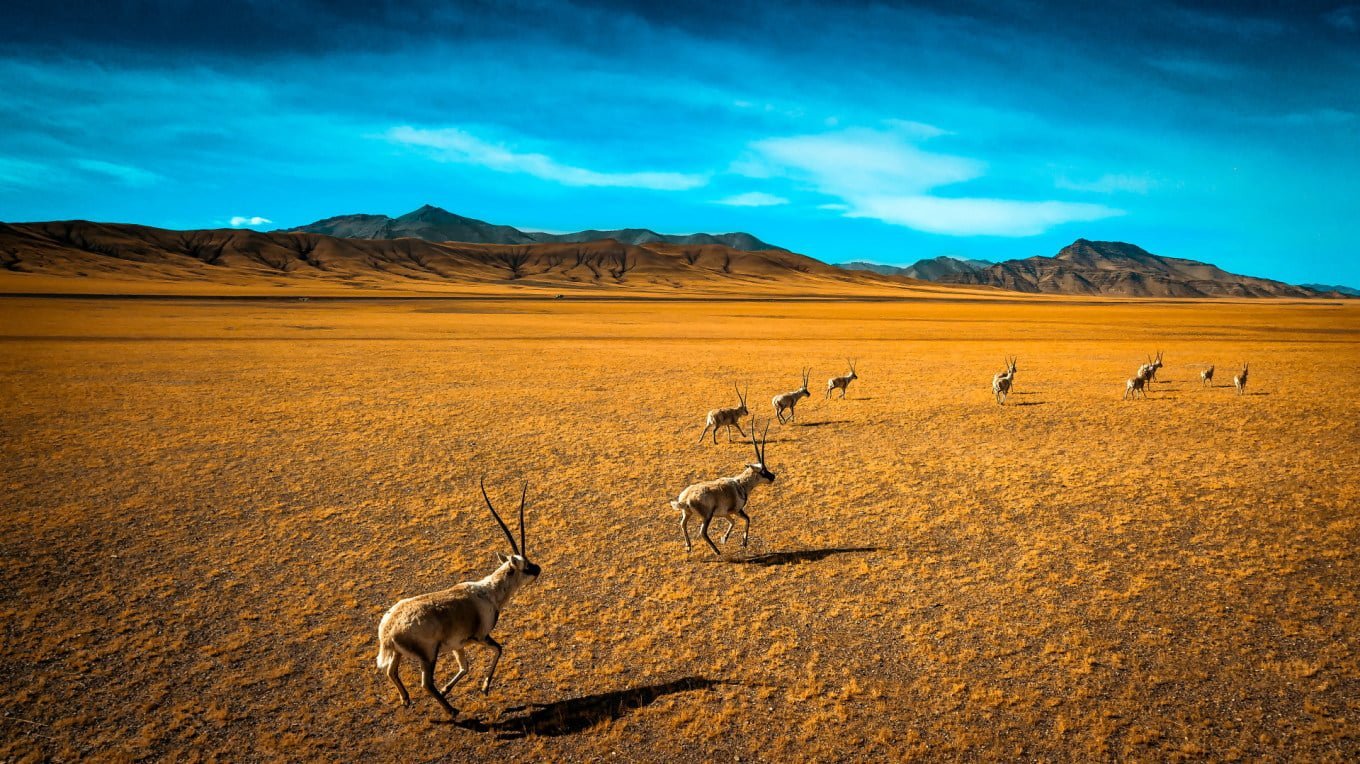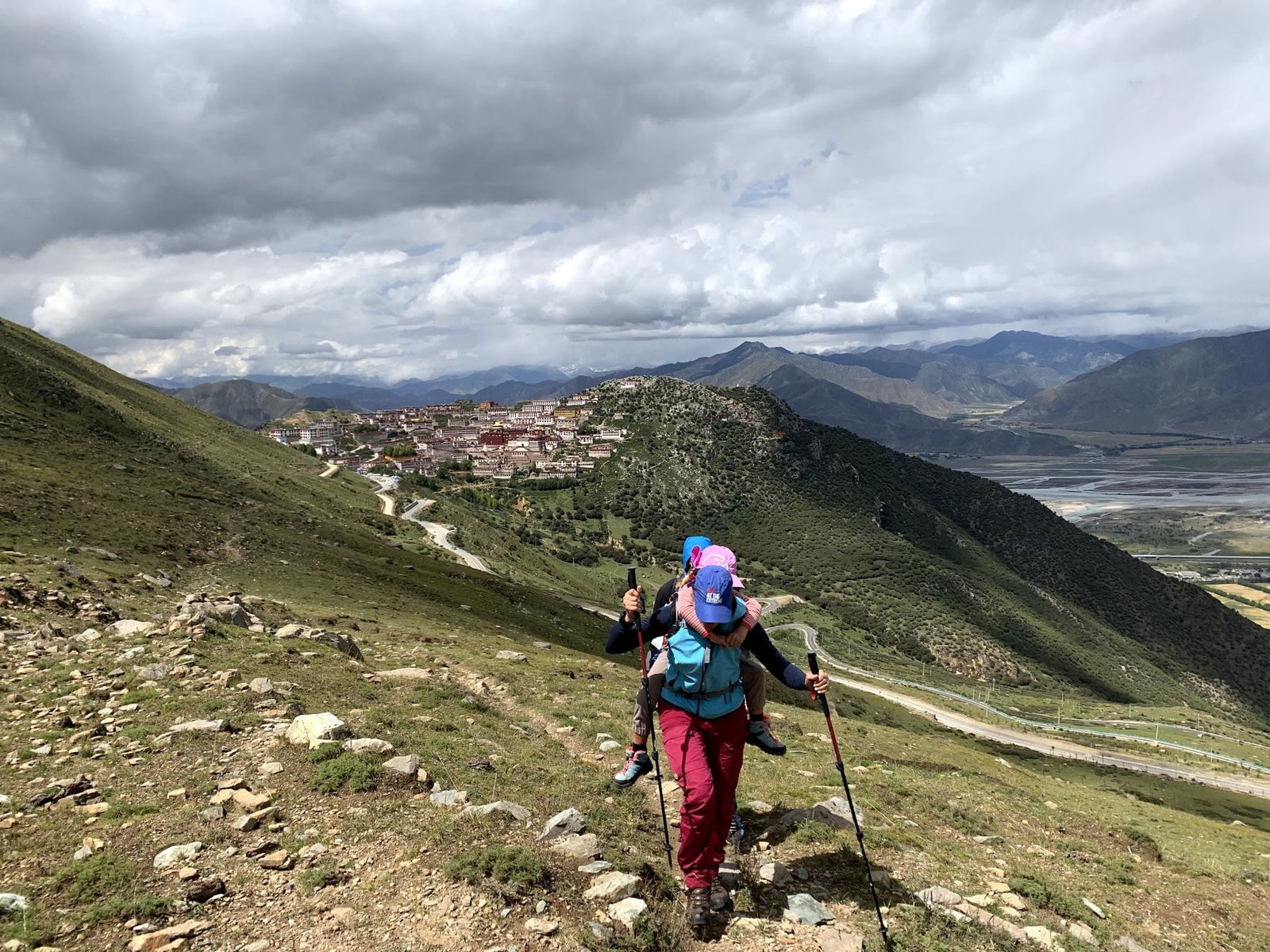Tibet is a wildlife paradise, home to rare and endangered species like the Tibetan antelope, wild yak, and the recently discovered white-cheeked macaque. The wildlife population in Tibet has considerably increased in the past two decades, according to a survey conducted in the Qamdo Prefecture of eastern Tibet. The survey indicates a continuous growth in fauna diversity.
White-cheeked Macaque
First discovered in 2012 in Medog County, this monkey species is the world’s most recently found. Its current status remains largely unknown. However, researchers have noted a remarkable increase in the population of endangered Yunnan snub-nosed monkeys in Mangkam County’s Gonglashan Nature Reserve. The number has soared from approximately 50 in the 1990s to now surpassing 700.
White-lipped Deer
Also called the rock deer, this species is indigenous to China and can be found in Qinghai, Gansu, western Sichuan, and eastern Tibet. It resides in the cold grasslands at an altitude ranging from 3,500 to 5,000 meters. The population totals approximately 7,000, with around 1,000 inhabiting Tibet. In the Riwoche Red Deer Nature Reserve, the red deer population has increased from about 70 to over 900.
Black-necked Crane
Also known as the Tibetan crane, it’s the only alpine crane in the world. The main breeding ground is the Qinghai-Tibetan plateau, although a small population is resident in India. They are usually found in high-altitude freshwater wetlands at 2.950 to 4.900 meters above sea level. Tibet is home to the largest population estimated to be about 8.000.
with Long-haired in response to the harsh climate of Tibet, wild yaks usually live at an altitude of 4,000 to 5,000 meters. Preservation measures have resulted in the population at the Changtang National Nature Reserve climbing to more than 60.000. A sharp contrast to the 6,000 recorded 20 years ago.
White-lipped Deer
Also known as the rock deer, it is native to China and is found in the provinces of Qinghai, Gansu, western Sichuan and eastern Tibet. It inhabits the frigid grassland at an elevation of 3,500 to 5,000 meters. The population is around 7,000, with about 500 living in Tibet.
Tibetan Wild Ass
The largest of the wild ass family, it is native to the Tibetan plateau. It inhabits alpine meadows and steppes between 2700 and 5.300 meters above sea level. Mainly found in China, the population is estimated to be more than 100,000.
Himalayan Musk Deer
Listed as an endangered species after a serious decline. Himalayan musk deer is most famous for the waxy substance called musk, used in the manufacture of perfumes, soap and medicinal preparations, making it one of the most highly valued animal products. Little is known about its current status.
Actions from Wildlife Protection Authorities
Tibetan local authorities have been increasing efforts to stop poaching and illegal trading of wildlife.
Numbers of Tibetan antelopes have grown from 50,000 to 70,000 in 1995 to more than 200,000, and black-necked cranes from 1,000 to 3,000 in 1995 to 7,000. Numbers of such rare and endangered species as wild yaks and Tibetan wild donkeys are also steadily growing, the white paper titled “Successful Practice of Regional Ethnic Autonomy in Tibet” mentions.
Natural reserve
Tibet has 47 nature reserves covering 412,200 sq km or 34.35% of the Region’s total land area. Additionally, there are 22 ecological reserves (two at the state level), four state-level scenic spots, nine national forest parks, 10 national wetland parks, and four geological parks (three at the state level). These protected areas safeguard 141 wild animal species and 38 species of wild plants under state protection. Furthermore, 196 indigenous animal species and 855 indigenous plants, along with important ecological systems, receive effective protection.
Qomolangma National Park has been established on the north of the mountain to protect indigenous wildlife. In recent years, with the strategic objectives of building an ecological safety barrier as well as an ecologically healthy and beautiful Tibet, the regional government has drawn up systematic plans to build and protect Tibet’s ecological environment.















